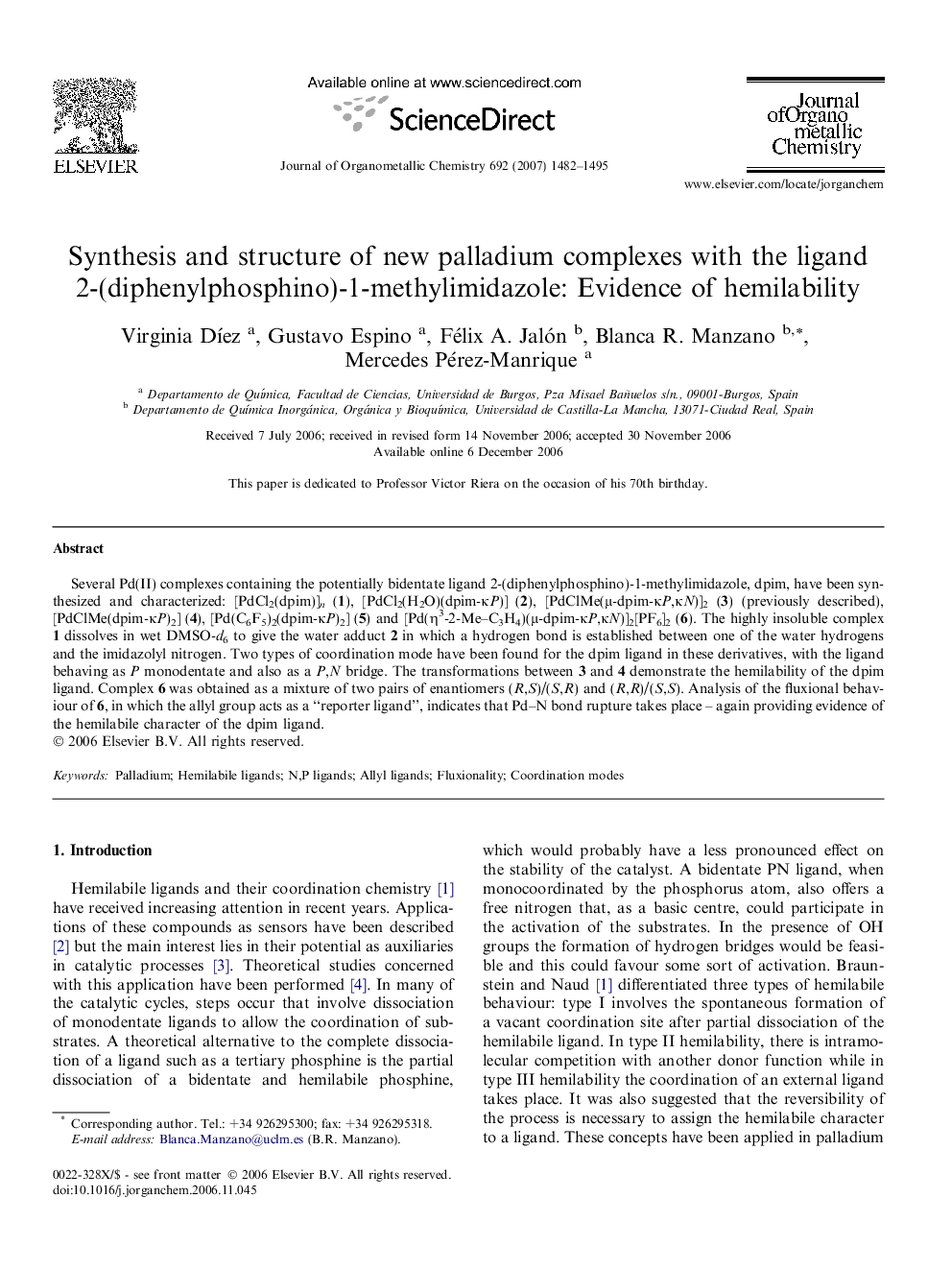| Article ID | Journal | Published Year | Pages | File Type |
|---|---|---|---|---|
| 1328265 | Journal of Organometallic Chemistry | 2007 | 14 Pages |
Several Pd(II) complexes containing the potentially bidentate ligand 2-(diphenylphosphino)-1-methylimidazole, dpim, have been synthesized and characterized: [PdCl2(dpim)]n (1), [PdCl2(H2O)(dpim-κP)] (2), [PdClMe(μ-dpim-κP,κN)]2 (3) (previously described), [PdClMe(dpim-κP)2] (4), [Pd(C6F5)2(dpim-κP)2] (5) and [Pd(η3-2-Me–C3H4)(μ-dpim-κP,κN)]2[PF6]2 (6). The highly insoluble complex 1 dissolves in wet DMSO-d6 to give the water adduct 2 in which a hydrogen bond is established between one of the water hydrogens and the imidazolyl nitrogen. Two types of coordination mode have been found for the dpim ligand in these derivatives, with the ligand behaving as P monodentate and also as a P,N bridge. The transformations between 3 and 4 demonstrate the hemilability of the dpim ligand. Complex 6 was obtained as a mixture of two pairs of enantiomers (R,S)/(S,R) and (R,R)/(S,S). Analysis of the fluxional behaviour of 6, in which the allyl group acts as a “reporter ligand”, indicates that Pd–N bond rupture takes place – again providing evidence of the hemilabile character of the dpim ligand.
Graphical abstractNew Palladium(II) derivatives containing the bidentate 2-(diphenylphosphino)-1-methylimidazole, dpim, ligand have been prepared. A water adduct with a hydrogen bond to the coordinated dpim has been obtained and the hemilability of the ligand has been demonstrated. A fluxional process that involves Pd–N bond rupture has been found for the allyl derivative.Figure optionsDownload full-size imageDownload as PowerPoint slide
